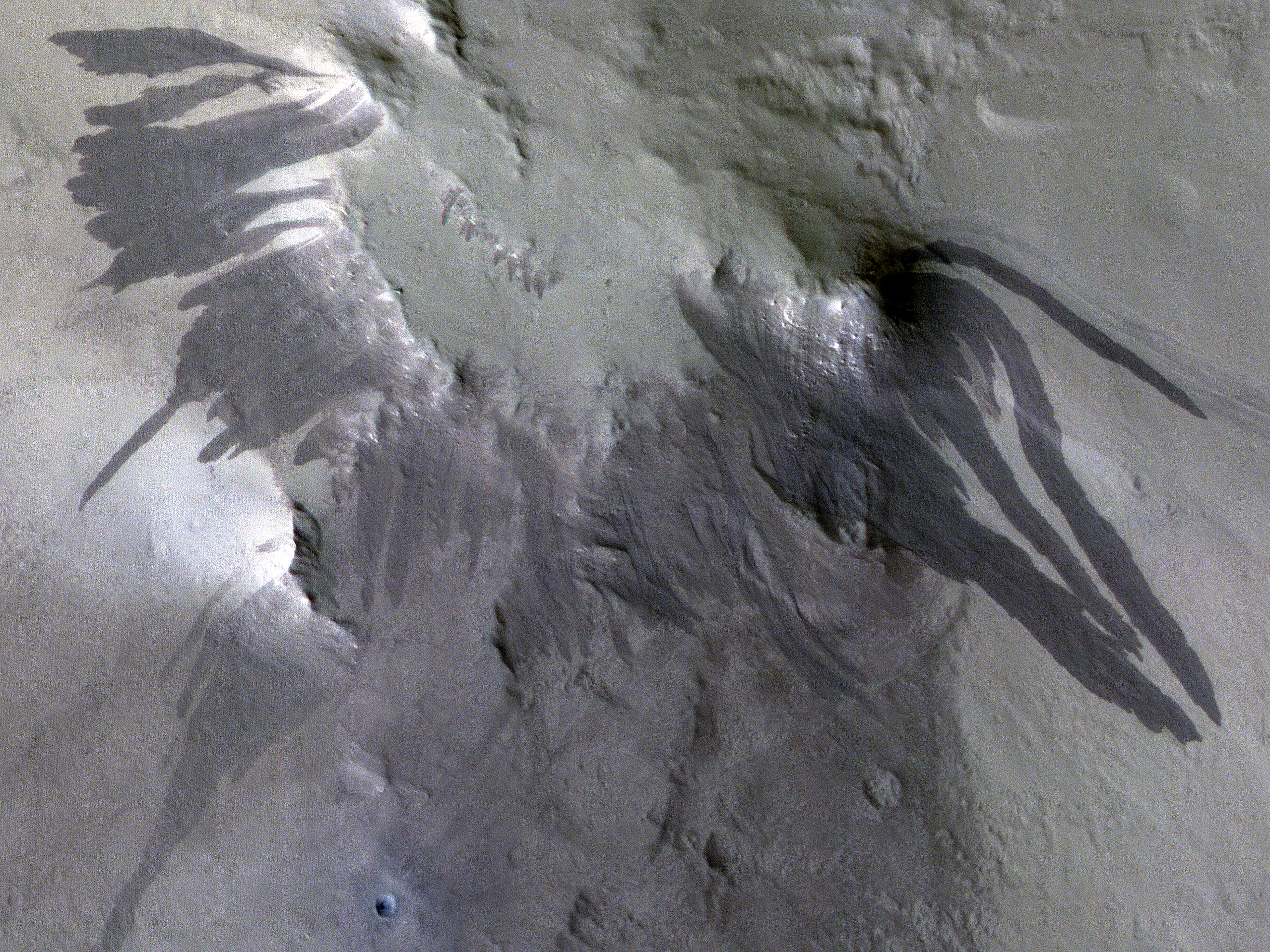Meteorites hit Mars and create small craters like the one we’ve imaged here. Usually we spot these new craters in lower-resolution images from the Context Camera because the impact disturbs dust on the surface and creates a dark mark that’s much bigger than the crater.
This meteorite hit a dusty area and made a crater, but did something a little more special to the surrounding dust. We can see dozens of dark, dust-free, streaks on slopes surrounding the crater. These slope streaks form when dust slumps downhill and happen naturally on a regular basis.
In this case though, the impact and explosion that made the crater seems to have set off many of these downhill slumps of dust simultaneously. This could have happened from the explosion’s blast wave passing through the air or the shaking of the ground that it caused.
ID:
ESP_065703_1900date: 2 August 2020
altitude: 276 km
https://uahirise.org/hipod/ESP_065703_1900
NASA/JPL-Caltech/University of Arizona
#Mars #science #NASA
